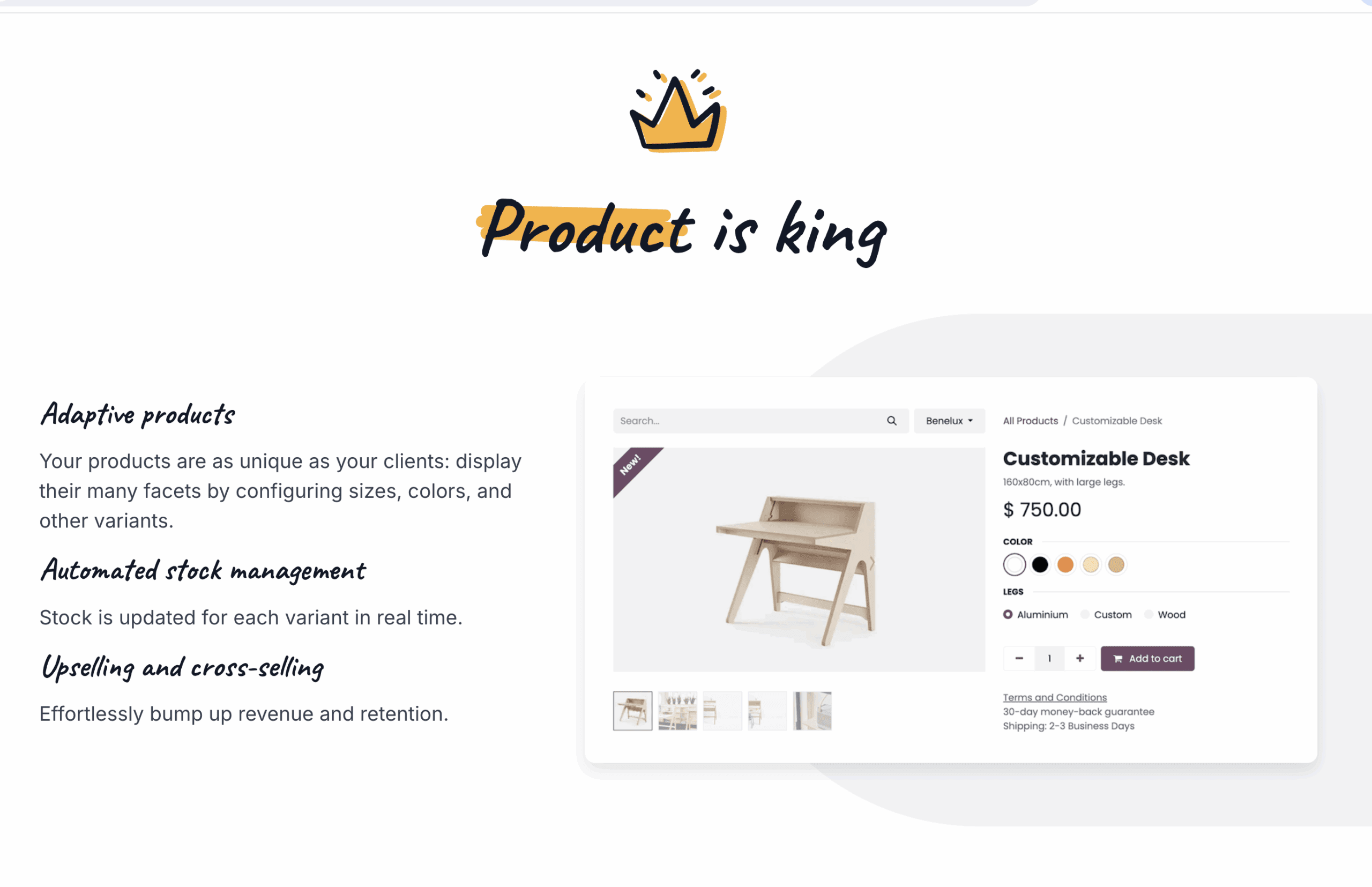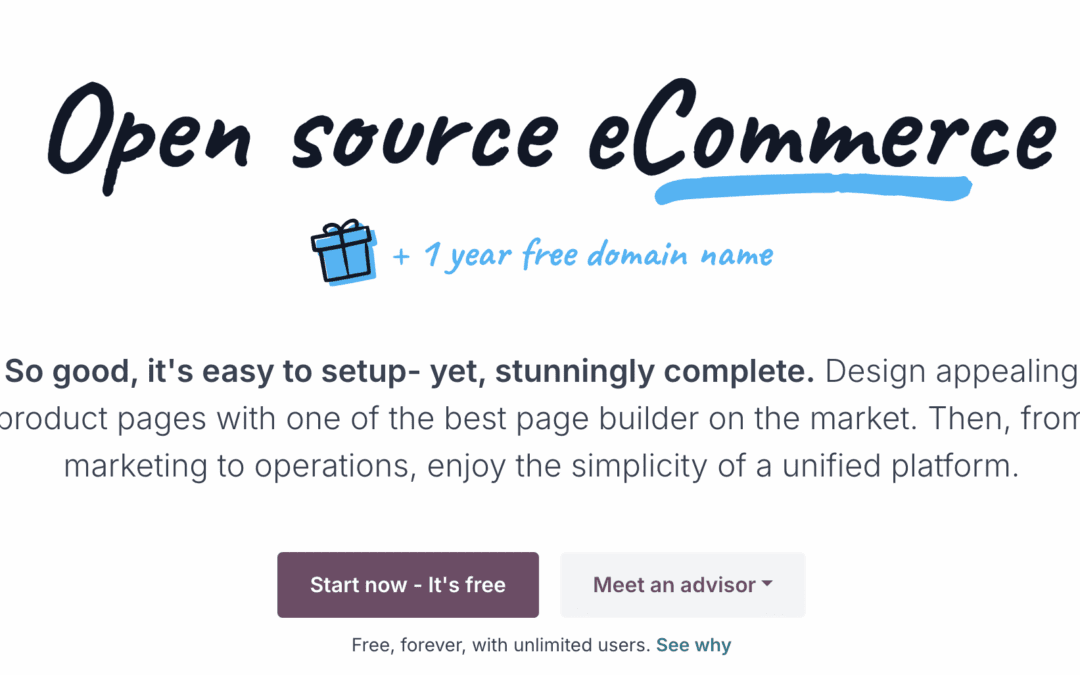|
|
Creating an online store sounds like it could be a daunting task. So daunting in fact that the first question that may come to your mind is: do I really need an online store for my business?
Whether you’re a graphic designer who wants to move into selling digital downloads, or have a great idea for a clothing brand, niche food product or travel essential, an eCommerce website could supercharge your potential. It’s a 24/7 revenue maker that could be taking sales and depositing money into your account as you sleep.
Not convinced? Picture this: you find a great tool and build an impressive eCommerce in minutes. Before you know it, your virtual business is open and you’re off exploring Kazakhstan with a Neo Nomad visa while your online store fuels your year-long adventure.
Who’s shopping online?
The impact that eCommerce has had on the way consumers find products and buy the things they want and need simply cannot be overstated. Already rising rapidly prior to 2020, eCommerce skyrocketed during the pandemic, and today it seems, there is no going back.
Everyone is doing it. So much so, studies suggest that around a quarter of all retail sales worldwide happen online. That figure has increased steadily over the last decade, as more and more shoppers turn to their smart phones and other connected devices to browse and buy.
Generation X leads the way in demographics and spending power, but Gen Z, Millennials and Boomers also buy online in huge numbers. The takeaway? No matter your business idea or the niche you’re targeting, your prospective customers are already online. They might even be shopping right now.
Should you create an online store for your business?
If you want to make more sales, attract a wider audience and scale your business, building an eCommerce website opens the door to a whole new world of potential.
- While physical stores are tied to specific opening and closing times, an eCommerce store offers the option to browse and buy around the clock. You’re open for business 24/7, no all-nighters required.
- Unlike traditional brick-and-mortar stores, which are restricted by geographical limitations, your online store can reach any corner of the globe, at any time, from any location. This increased reach means that you can cater to niche markets, expand internationally, and attract customers from other countries.
- Another reason to invest in an eCommerce website for your small business is cost efficiency. Running an online store reduces the need for a large retail space, so you won’t be saddled with a hefty lease for a high street presence.
- You can set your online store up to integrate with time-saving automation tools such as inventory management, order processing and even some marketing functions. This significantly reduces operational expenses and boosts efficiency.
- There’s a significant additional benefit to building an online store that’s often overlooked. That benefit is work-life balance. A traditional store will require you to be in the vicinity. You’ll need to be there to open and close, work in-store during your regular opening hours, and perhaps supervise staff. With an online store, you can work from anywhere. If you want to apply for a digital nomad visa for a country you’ve never visited, you can. And you can run your business and continue to earn a living at the same time.
No matter the size or age of your SME, an eCommerce store gives you a cost-effective platform to expand your reach, increase customer engagement and ultimately, grow your sales.
Of course, success doesn’t happen overnight. And your website isn’t going to build itself. You need the right tool.
A platform like Odoo’s eCommerce would simplify the process of creating your
online store. No technical capabilities or costly coding team required!
How to Get Started
With the right approach, you can set up an online store quickly and efficiently. As it is the case with many tasks, the key is to break the process into smaller, more manageable steps.

Step 1: Define your target audience
Before launching any kind of business, you need to have a good understanding of your target audience. Consider answering these questions to build up a realistic persona:
- How old is your ideal customer?
- What age range do they fall in?
- What is the job?
- Where do they live?
- What are their hobbies?
- What problems are they facing?
- How can you help?
Building a complete picture allows you to tailor your branding and website design to that person specifically. This is an important first step in making your online store a success. Why? It’s simple. Because you know who to cater to.
If you’ve decided your business will serve young, adventurous professionals who love to travel, you might use that knowledge to choose very aspirational images, opt for bright colours and offer perks like free worldwide shipping. You know these things will appeal to your target market because you’ve created an idea of who they are and what they like.
Likewise, if your brand will target older consumers, a clear, clean layout, ease of navigation and accessibility will be front of mind. You’re setting yourself up for success by understanding who you want to do business with and then creating an online store that meets their needs.
Still not sure what your ideal customer looks like? That’s fine. Market research, customer surveys, and competitor analysis can provide invaluable insights. This doesn’t have to be costly. Use social media, ask your co-workers, and study other eCommerce websites in your niche to gather intel.
Step 2: Select an eCommerce platform
Choosing the right eCommerce platform can make or break your fledging online store.
Many platforms require third-party plugins and complex integrations to function effectively. That can fast become a nightmare if something goes wrong, and you don’t have an extensive technical background. Dealing with routine maintenance issues and making changes can be costly and the whole process can become incredibly frustrating and time consuming.
Odoo’s no-code eCommerce solution is designed to be intuitive and user-friendly, making it accessible to businesses of all sizes. With Odoo’s eCommerce, you can easily create and manage your online store without any technical expertise.
One of the biggest advantages of Odoo eCommerce is its seamless integration with the entire Odoo suite of apps. Since all Odoo apps are part of a unified platform, you can efficiently manage inventory, sales, accounting, marketing, and more from a single interface. This not only saves time but also reduces operational costs.
Step 3: Design your store
Odoo’s AI-powered eCommerce website makes the design process refreshingly straightforward. So much so, you can create an attractive and functional online store in minutes. Generate your overall design using prepared themes and then customise the product pages to your tastes with drag-and-drop building blocks.
The technical considerations are also taken care of, with each design fully mobile responsive. This gives you peace of mind that your online store will look equally professional and aesthetically appealing on a desktop PC as it does on the smaller screen of an iPad or smartphone.
Step 4: Add your products
The next step in building your online store is to craft compelling product pages. There’s a lot to think about at this stage. That’s because you may well have products with multiple size variations and several colour options or even material choices. You need to make it easy for the shopper to order the exact product they want, so you don’t lose their order to a competitor.
Research suggests that around 81% of online shoppers like to do their research before buying, so considering purchase psychology should also play a role in how your products are presented to visitors. You may want to display ‘alternative products’ so that shoppers can weigh up their options for example or show star ratings.
According to Harvard Business Review, up to 98% of shoppers read reviews before they decide what to buy. Showcasing what others thought of your products helps to satisfy that need for peer insight and could help to tip the purchase decision in your favour.
With Odoo eCommerce, setting up great product pages is super easy. You can add size and color options, suggest alternatives, and show customer reviews in just a few clicks. It’s all about making shopping simple and helping customers hit that “buy” button.

Step 5: Set up payment processing and decide on your shipping policies
You’re so close to launch!
It goes without saying that payment processing is another non-negotiable element for your online store. After all, you can’t make a sale if you can’t take payment from your customer. This task has potential headache written all over it. You’ll need a payment gateway to manage the transaction and a way to transfer those funds from your store to your bank account.
This is another area where choosing the right eCommerce is invaluable.
Odoo supports a variety of payment gateways. This means your customers can choose their preferred payment method, whether that’s a credit card, via PayPal, or even bank transfers. Secure payment processing helps build trust and reduces the risk of fraudulent transactions, which protects both your business and your customers’ peace of mind.
You also need to be able to calculate shipping, add that to the amount to be paid, and let your customer know when to expect their goods. Recent research suggests that as many as 7 in 8 of your shoppers will expect same-day or next-day shipping. Remember, timescales may be impacted by their location and the timeframe selected.
With Odoo you can stay in control. It’s easy to define shipping methods, set delivery rates, and provide tracking options. Features such as “Click & Collect” enable customers to purchase items online and pick them up from a physical store, offering greater convenience and flexibility, depending on your business’ capabilities.
Step 6: Register your business and secure a domain name
Before you can launch your online store, it is important to register your new business in accordance with local laws and regulations. Obtaining the necessary permits, tax registrations, and legal approvals gives you and your customers peace of mind that your eCommerce business is legit. Registering the business also adds credibility, making it easier to establish partnerships, secure payment processing, and build customer trust.
You’ll also need to secure a domain name. Your domain name is your online address. You need it for customers to be able to visit your site, but it’s also invaluable for branding and discoverability. If you choose to use Odoo’s eCommerce app, you’ll also get a free custom domain name for one year. This means you can establish your online presence without incurring a barrage of upfront costs.
When it comes to choosing your domain name, where possible aim to select something short, memorable, and easy to spell. That makes marketing more straightforward a little further down the line, and is also easier for shoppers to remember and share.
Step 7: Set up automated inventory management
Having a robust inventory management system in place isn’t just an important consideration when designing an eCommerce website. It’s a key component in your success (or a recipe for disaster if you get it wrong). The best tools for eCommerce creation will include an inventory management integration option.
Odoo excels in this regard. Its automated stock management system ensures that inventory levels are updated in real-time, preventing stockouts, overselling and stock discrepancies. This helpful tool means you’ll never run out of stock, can easily keep in touch with vendors and automate tasks like placing purchase orders to free up time and maximise efficiency.

Step 8: Let’s market!
You’ve used Odoo to create a beautiful new eCommerce website. You’ve loaded up your products, set up payment processing, arranged shipping and you’re ready for your first orders.
The old phrase ‘build it and they will come’ isn’t quite accurate in the online commerce space. You’ll need a strong marketing strategy to raise awareness and make your store easy to find.
As an integrated platform, Odoo also provides built-in marketing tools to ease the process of attracting and retaining customers. It’s often said that email is one of the most effective forms of marketing, with $36 earned for every $1 you spend, making that a logical place to start. With targeted email marketing, you can create personalised campaigns and send targeted promotions to customers. Try sharing coupons or sending forgotten cart reminders to maximise sales.
Of course, you don’t want to put all your eggs in one basket. Social media plays an important role in product discovery, so you’ll need to think about how you can create engaging content and get your product images and videos in front of your target demographic on platforms like Instagram, Facebook and TikTok.
Step 9: Analyse, learn and scale up
Your online store is up and running but your work is far from done. Improvement is an ongoing process. A successful eCommerce business is inevitably a data-driven one.
Your online store provides invaluable insights which take you into the minds, hearts and wallets of your shoppers. You can use your backend data to analyse and predict sales trends, learn more about your customer behaviour, and judge just how effective your marketing efforts are. This is knowledge. It provides insight to help you make small, incremental changes to delight your audience and progressively build a thriving online store.

The Verdict
Setting up an online store has never been more vital — and with Odoo’s business management platform, it’s never been easier.
With its user-friendly interface, AI-driven website builder, automated inventory management, and powerful marketing tools, you can effortlessly create and manage your online store from anywhere.









